I have an experiment where three evolving populations of yeast have been studied over time. At discrete time points, we measured their growth, which is the response variable. I basically want to plot the growth of yeast as a time series, using boxplots to summarise the measurements taken at each point, and plotting each of the three populations separately. Basically, something that looks like this (as a newbie, I don't get to post actual images, so x,y,z refer to the three replicates):
| xyz
| x z xyz
| y xyz
| xyz y
| x z
|
-----------------------
t0 t1 t2
How can this be done using ggplot2? I have a feeling that there must be a simple and elegant solution, but I can't find it.
